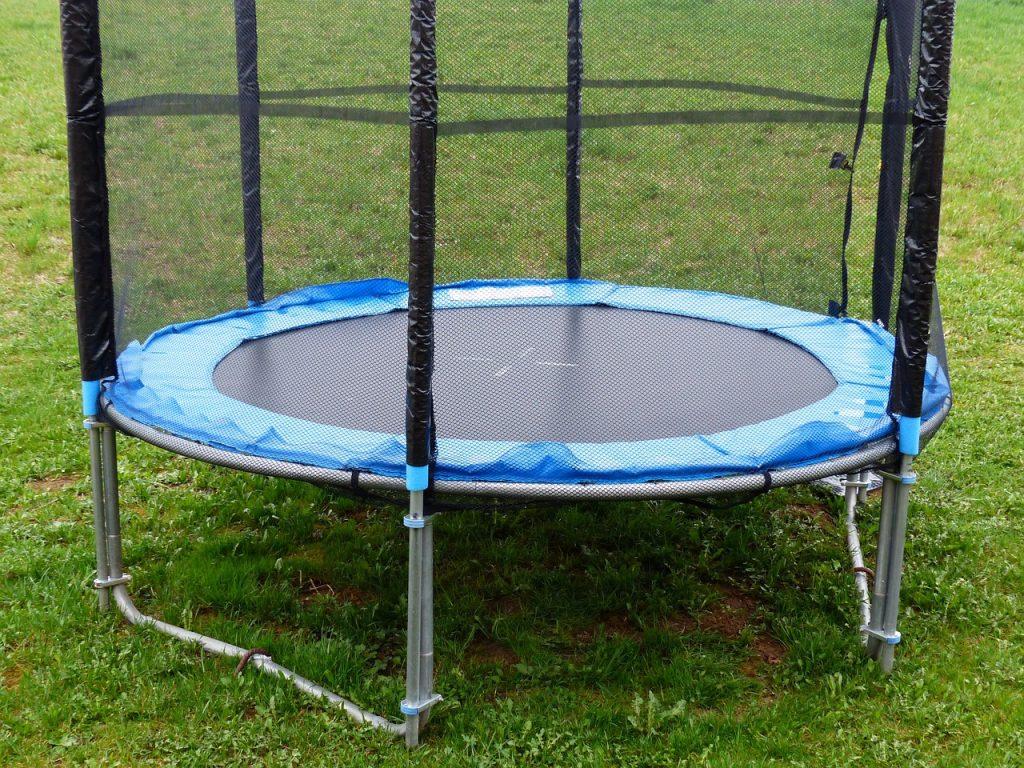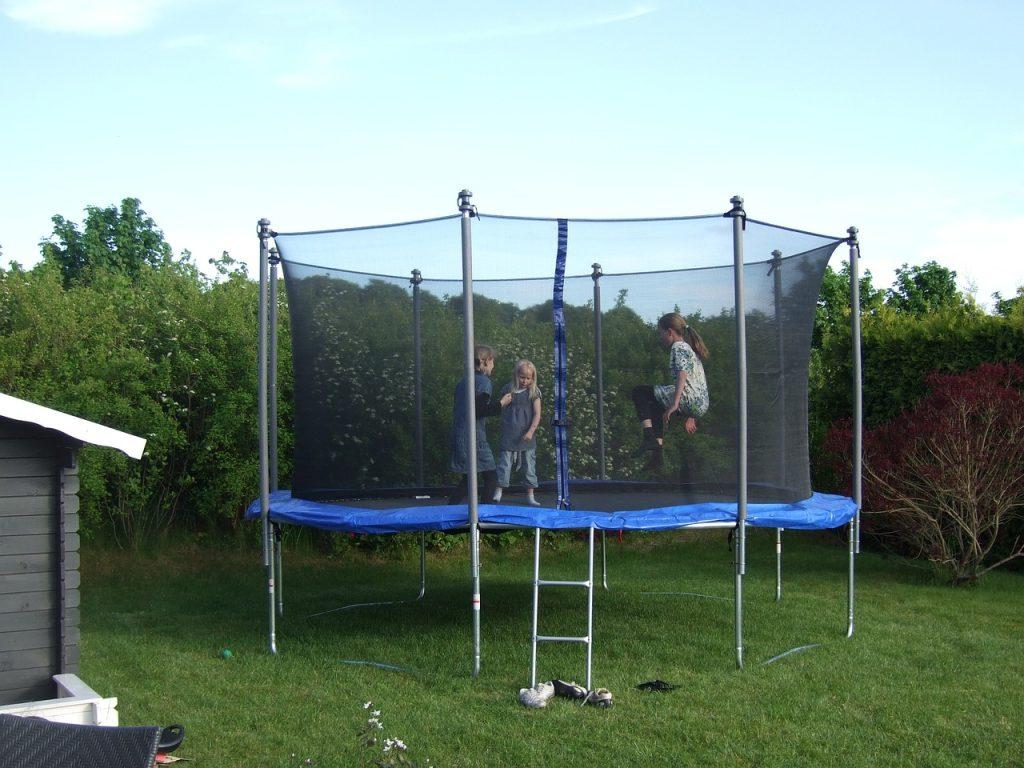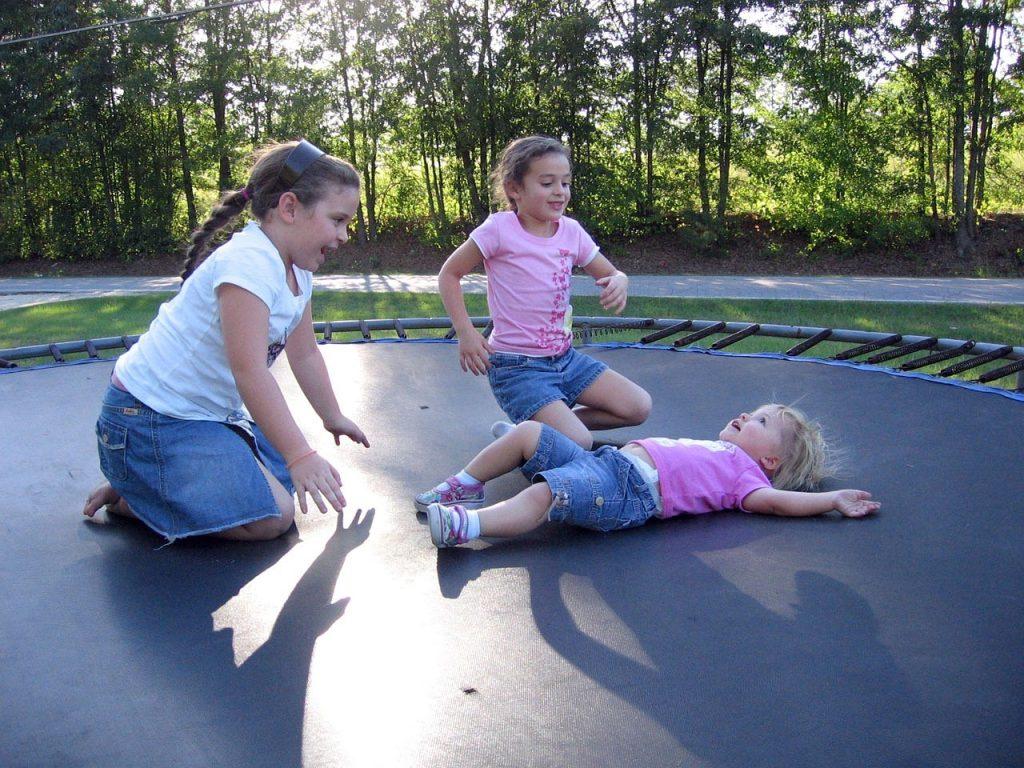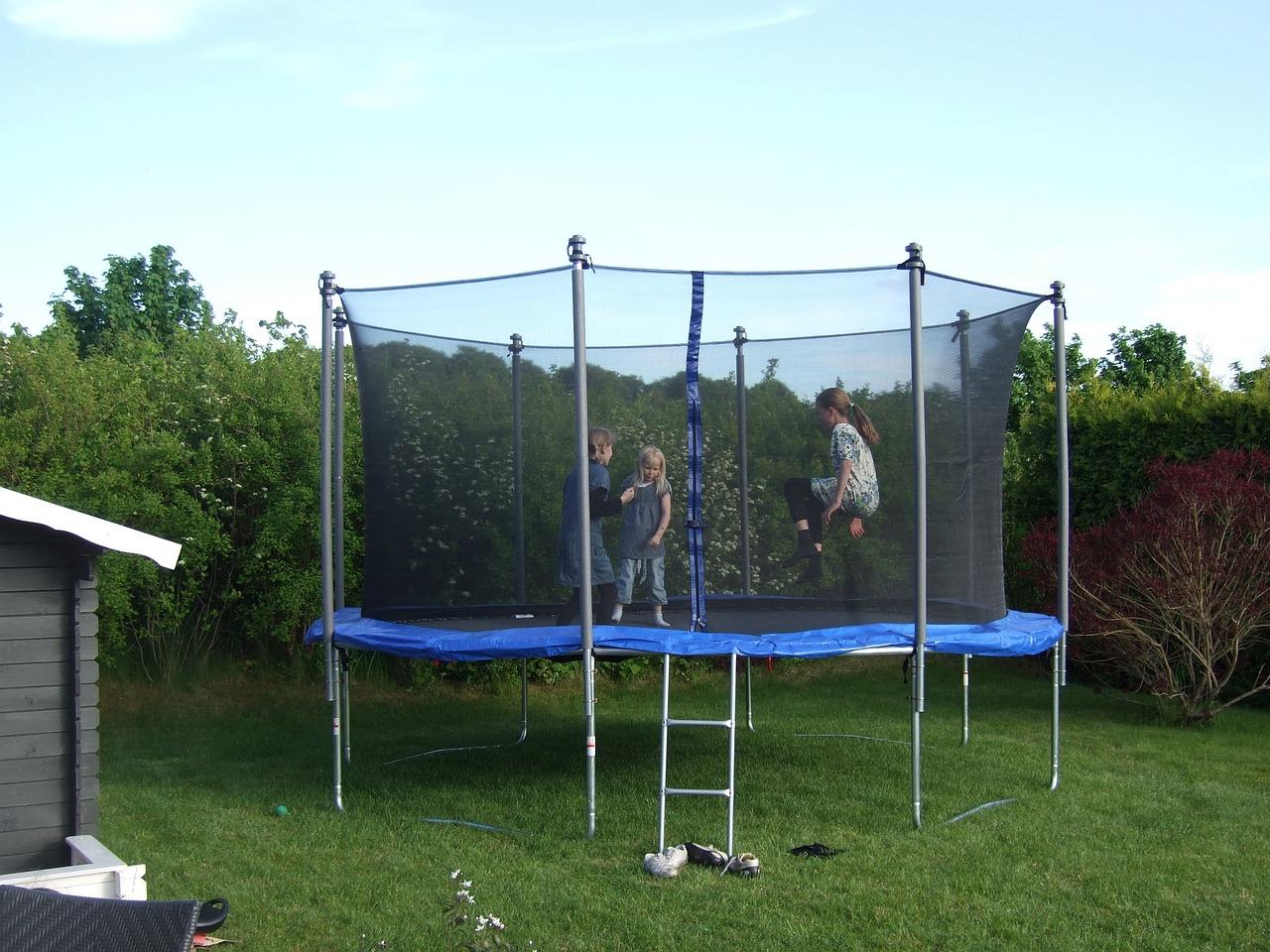Typically defined as an elevated canvas surface supported by springs in a metal frame and used for tumbling, trampolines maintain a reputation as either notorious or loved for a good reason. Today, trampolines come in all shapes and sizes and are a common piece of equipment enjoyed by professional athletes and recreationally by the general public. In fact, they’re so popular among American households that Globe News Wire estimated that the trampoline global market is projected to reach a size of US$3.9 Billion by 2026! Nevertheless, despite their popularity, recreational trampolines remain a dangerous activity, with WebMD noting that the American Academy of Pediatrics (AAP) considers trampolines as a serious cause of injuries to children.
Are Trampolines Safe?
Here, we want to analyze the dangers of trampolines, common injuries, the primary causes of injuries, who’s at risk, and the steady influx of trampoline-related injuries over the years. With the growth in the popularity of trampolines and trampoline parks, we expanded this post to provide much more than seven trampoline injury statistics. Talk with an experienced Austin personal injury attorney to learn about the next steps following your own accident.
A Brief Timeline Of The Trampoline

While most people know trampolines as a fun backyard activity from their youth, the act of recreational bouncing has a rich history that dates back thousands of years. Here’s a brief timeline of the trampoline’s evolution throughout history to its uses today.
Ancient Jumping
Trampoline-like devices can be traced back to ancient civilizations with depictions being found in cultures such as Egypt, Iran, China, and more. More recent examples include the Inuit tribes of Alaska who used walrus skins or furs stretched over a frame to bounce performers into the air during celebrations.
⬇
19th Century Acrobatics
In the 19th century, a French circus artist named Du Trampolin developed a similar device using tight ropes and a canvas sheet, which allowed performers to perform acrobatics and tricks with increased height and agility.
⬇
The Modern Trampoline
The modern trampoline as we know it today was invented in the early 20th century by George Nissen and Larry Griswold, two American gymnasts. In 1936, they created a prototype of the trampoline using a steel frame and canvas bed and patented their invention in 1945. Initially, trampolines were used primarily for training gymnasts and military pilots to develop spatial awareness and coordination.
⬇
Recreational Popularity And Competitions
Trampolines gained popularity as a recreational activity in the mid-20th century, and their use expanded to include entertainment, sports, and fitness. The first official trampoline competitions were held in the 1940s and 1950s, and the first World Trampoline Championships were organized in 1964.
⬇
Olympic Recognition
Trampolining was officially recognized as an Olympic sport in 2000, with competitions for individual and synchronized trampoline events.
⬇
Trampoline Parks
Due to the popularity of recreational jumping, public trampoline parks have become increasingly popular in recent years, offering a unique and fun experience for people of all ages.
Types Of Trampoline Models And Associated Risks

Although the premise of the trampoline remains the same, there are a number of different types of trampolines available on the market. Not only does the type of trampoline dictate its different uses, but also influences the types and severity of injuries suffered on them.
Yard Trampolines
These are the most common type of trampolines used for recreational purposes in the yard of an individual’s home. By far, these are considered to be the most dangerous types of trampolines and are the leading cause of injuries to children at home, to the point that the American Academy of Pediatrics strongly discourages owning or using them.
Water Trampolines
Designed for use on water, typically in lakes, rivers, or ocean bays, water trampolines often have inflatable frames and a fabric jumping surface that floats on the water. They are popular for recreational use, offering a fun and exciting way to jump and play on the water, although pose a high risk for water-related injury.
Professional Trampolines
Professional trampolines are designed for competitive use in gymnastics, acrobatics, and freestyle tricking. They are typically larger and more robust than backyard trampolines, with a higher bounce and specialized features such as additional springs, stronger frames, and larger jumping mats. Therefore, it is discouraged for recreational jumpers to use, as they have more power and are inherently more dangerous.
Springless Trampolines
Also known as spring-free trampolines, these trampolines do not have traditional metal springs. Instead, they use alternative technologies such as flexible composite rods or bungee cords to provide the bounce. Springless trampolines are often marketed as safer options, but that isn’t necessarily true.
In-Ground Trampolines
These trampolines are installed at ground level, with the frame and jumping mat level on the ground. In-ground trampolines are often chosen for their aesthetic appeal, as they blend into the landscape and do not obstruct the view. They may also be considered safer as they have a lower height from the ground, but they don’t prevent all kinds of accidents.
The Most Common Types Of Trampoline Injuries
Every year, over 100,000 people in the U.S. are treated in emergency rooms for trampoline injuries, with 500 resulting in permanent neurologic damage. Although many of these cases are severe, there are countless injuries that also go undocumented.

For the most part, trampolines are considered to be inherently dangerous because they allow the user to play with gravity. What goes up, must come down, and unfortunately, it isn’t always pretty. Understandably, injuries are not uncommon, with one study finding that there were an estimated 1,376,659 emergency department (ED) visits for trampoline-related injuries from 1998 to 2017 alone. Although injuries are situational and vary in severity, there are some trampoline-related injuries that are considered to be more common than others. These include:
Sprains and Strains
Landing awkwardly on the trampoline bed or colliding with another jumper can cause sprains or strains in joints, such as ankles, knees, and wrists. Furthermore, overexertion or repetitive jumping can also lead to overuse injuries. In a 2022 study looking at trampoline injury data from 2008 to 2018, it was concluded that of the 800,969 injuries calculated, 33% were sprain/strain injuries.
Bone Fractures
Fractures, including broken bones in the arms, legs, and spine, can occur from landing with excessive force or getting caught in the springs or frame of the trampoline. In a study examining the National Electronic Injury Surveillance System database for trampoline injuries, of the 1,002,735 ED visits for trampoline-related injuries between 2002 and 2011, 288,876 (29%) sustained fractures and that lower extremity fractures were more frequently female (54.0%). Furthermore, the forearm (37%) and elbow (19%) were most common in the upper extremity; elbow fractures were most frequently admitted (20.0%). The tibia/fibula (39.5%) and ankle (31.5%) were most common in the lower extremity; femur fractures were most frequently admitted (57.9%). It was also noted that these trampoline-related fractures most frequently involve the upper extremity followed by the lower extremity and that 20% to 30% may require surgery for their fractures.
Neck/Spinal Cord Injuries
Jumping or attempting flips without proper control or landing on the head or neck can result in serious injuries to the spine. In 2000, a study by Brown and Lee reported that trampolines were responsible for more than 6,500 pediatric cervical spine injuries in the United States, leading them to support a ban on the use of trampolines by children.
Traumatic Brain Injuries
The most common types of TBIs associated with trampolines include concussions, skull fractures, and contusions (bruises) to the brain. These injuries can range from mild to severe, and in some cases can be life-threatening. One past study posted by JAMA Pediatrics demonstrated that in a study period of just two years, around 15% of trampoline-related injuries were TBIs! If you or a loved one suffered a head injury, contact an Austin brain injury lawyer as soon as possible.
Direct Causes Of Trampoline Injuries

Injuries From The Springs Or Frame
Fingers, toes, and other body parts can get caught in the springs or hit the frame of the trampoline, resulting in bruises, cuts, or more severe injuries. One study posted by BMJ Journals notes that between 2002-2007, the springs or frame contributed to 19% of all trampoline injuries involving fractures, lacerations, and contusions, as well as dental and head injuries.
Collision Injuries
Colliding with another jumper while in mid-air or landing simultaneously on the same spot can lead to collision injuries, such as bruises, cuts, and fractures. While jumping with friends sounds like more fun, it greatly increases the chance of injury. The American Academy of Pediatrics warns that more than three-quarters of injuries sustained on trampolines come from more than one person jumping at a time.
Performing Stunts
Attempting tricks or stunts on a trampoline can be particularly dangerous because many of these maneuvers expose the head and neck and can lead to unbalanced landings. This results in injuries of all kinds sustained, particularly cervical injuries, which occur with falls off the trampoline or with attempts at somersaults or flips.
Falling Off The Trampoline
Falling off the trampoline or landing improperly while jumping can result in injuries such as fractures, sprains, and bruises. Jumping too high or attempting risky tricks without proper skill and supervision can increase the risk of falls, which according to experts at Frontline ER makes up for around 40% of trampoline-related injuries.
Lack of Supervision
Unfortunately, trampoline-related injuries can happen regardless of supervision. Yet, having someone present to enforce rules, keep things under control, and be there if there’s a problem is always recommended. The doctors at the Cleveland Clinic even insist on having supervision at all times if a trampoline is in use.
Trampoline Injury Demographics

Children
When it comes to who is most at-risk when it comes to trampoline injuries, it has been proven time and time again that it is always small children. As exemplified by the AAOS, more than 90% of trampoline injuries are consistently sustained by children between the ages of 5 and 15.
One explanation for this is provided by Dr. Loder in a study which states: “Average age for total injuries was about 9, but the average age for axial skeleton injuries was substantially higher at 16.6 years old. [This] differential accounts for the higher jumping of older children with more force and the fact that teenagers are risk-takers. Younger kids may not understand the potential outcomes of their actions, but they’re not so much risk takers. Teenagers, they’ll just push the limit.”
Furthermore, this statistical fact aligns with the fact that younger children have developing bodies that leave them to be more susceptible to injuries. As described by pediatric orthopedic surgeon Jennifer M. Weiss, MD, “Children younger than age 6 are less likely to have the coordination, body awareness, and swift reaction time necessary to keep their bodies, bones, and brains safe on trampolines.”
Teenagers And Adults
Interestingly, as found by a study in the National Library of Medicine, trampoline injuries by teenagers and adults have been on the rise in recent years. Although the injury statistics are nowhere near those of children, teenagers, and adults who are not safe from trampoline injuries themselves. According to the study, Over the last two decades, trampoline-related injuries have become more common in patients older than 16 years of age. These are most common in the lower extremities. While most of the patients in the present study only suffered minor injuries, the occasional severe injury might result in long-term disability.
Trampoline Fatalities

Trampoline injuries can be serious, and deaths related to trampolines do occur, although they are rare. According to the Consumer Product Safety Commission (CPSC), there were an estimated 97,908 emergency department-treated injuries associated with trampolines in the United States in 2019, and 13 reported deaths associated with trampolines from 2010 through 2019. Nevertheless, this has proven to be a decrease in the number of deaths between 2000 and 2009 which was 22 reported deaths.
The Rise Of Trampoline Parks And Increased Accidents

Despite trampolines being a known danger to young children and even adults, the public can’t seem to get enough of them. So much so, in fact, that there are now trampoline parks dedicated to recreational jumping. Wall-to-wall with trampolines, children, and other jumping-related activities, these environments are a recipe for disaster.
This is demonstrated in a study by the British Medical Journal, kids were more than twice as likely to suffer musculoskeletal and/or orthopedic injuries using a trampoline at a trampoline park than kids using a trampoline at home.
This is understandable considering that more trampolines, more children, and less supervision are likely to result in more injuries.
News Stories Of Trampoline Park Injuries:
- Carlsbad, CA Boy In A Coma After Trampoline Park Accident
- Wisconsin Boy Injured At Trampoline Park
- Toddler In Body Cast After Trampoline Accident
- Man Sues For $15 Million After Trampoline Park Incident
Tips To Avoid Injury

While countless medical professionals have stressed the dangers of at-home/recreational trampolines, they don’t seem to be going anywhere. While expert advice is to avoid them, if you do plan on using a trampoline, here are some tips to avoid injuries. The American Academy of Orthopedic Surgeons recommends:
- Do not allow children younger than 6 years of age to use trampolines.
- Provide careful adult supervision, proper safety measures, and instruction when trampolines are used for physical education, competitive gymnastics, diving training, and other similar activities.
- Allow only one participant at a time to use a trampoline.
- Ensure that spotters are present when participants are jumping. Somersaults or high-risk maneuvers should be avoided without proper supervision and instruction; these maneuvers should be attempted only with the proper use of protective equipment, such as a harness.
- Place the trampoline-jumping surface at ground level.
- Ensure that supporting bars, strings, and surrounding landing surfaces have adequate protective padding that is in good condition and appropriately placed.
- Regularly check equipment for safety conditions; discard worn or damaged equipment if replacement parts are unavailable
- Do not rely on safety net enclosures for injury prevention; most injuries occur on the trampoline surface.
- Remove trampoline ladders after use to prevent unsupervised access by young children.
